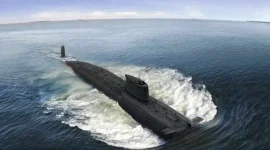Answered in corresponding paragraphs pattern ---
Kashin & P-15 DDGs have deck-based Brahmos slant-launchers. It is "doable".
No Navy overstuffs their vessels -- South Korea or Japan. It is a misconception. RoKN & JMSDF have more VLS because they've Aegis (Ashore + Ship) and lacks terrestrial space to mount an effective networked BMD and AD. CIC, VLS, power gen & power distribution compartments are armoured w.r.t. rest of ship.
Indian DDGs have CEC. DDGs & FFGs and others operate in networked & formation - any country (unless your're outcast) anywhere they operate -- even during Prosperity Guardian. Houthis can fire any number of missiles, they're no threat to any warship, but a nuisance. French used NH-90 to shoot down a Houthi ASHM. Italian shot another down with SRGM. That's how they are lame.
If assumption is the name of the game, then let's soar higher. Where does China decides to engage a small group of "our" ships -- IOR or SCS ? China engaging Indian ships is an ACT OF WAR. Then they face Brahmos. Let's also assume that French & American naval forces come to our rescue from Reunion & Diego Garcia.
What is your estimate as to why Navy chose what they chose credible minimum level of defensive equipment? Indian Navy is the only dominant navy in IOR with CEC & OTHT capability w.r.t. Brahmos.
An 8-cell empty Brahmos VLS is called 3S-14UE1 UKSK with ~10 m and width of 2.3m. Check internal schematics of any decommissioned older ships -- Try Americans, Russian & French and their VLS. Focus especially on the underdeck vents, pipings, electricals & hydraulics, pedestals, vibration isolation mountings, fire extinguishing, maintenance hatches, hazard monitoring sensors. A picture is worth thousand words. Find out through estimation/observation whether BrahMos/ITCM will have same VLS length & dia.
In ASW domain, RBU-6000 does 4 things -- destroy the torpedo, disrupt the route, snap the wire-guidance, haywire the transducer due to explosion. They are effective in destroying torpedo -- that's why they 're on every ship. It's a sasta-tikau 212 mm aquatic mortar. In Indian ship, RBU-6000 is part of IAC MOD ‘C’ suite. You want extra AD air cover at the expense of ASW? How would your ship, working "independently" as you've mentioned, defend against a multiple HWTs fired by SSN ? How did you arrive at 24 VLS figure?
Why are you so VLS-centric? What do you want more inside a VLS --- LACM, AShM, SAM or ASW ??
What is your estimate of "adequate" no. of VLS ? If 32 is underarmed, there may arise a pitched scenario where 48 is also deficient ?
What threatens a ship more - AShM or Torpedo?
1. The Kashins (technically, only the ex-Rajput) and Delhis do have inclined launchers. However, these are also very large in size, and when compared to the ships, you can't exactly put them perpendicular to the ship's length as a lot of other frigates and destroyers do. Their size means they have to be pointing towards bow or stern, which increases the space requirement quite a bit. Hence why I said VLS would be better for them.
2. RoKN and JMSDF ships do have BMD duties, but they also possess shore-based BMD capabilities (even if they are limited). I am not saying that either of those Navies will suddenly just cram in quad-packed ESSMs into every single VLS cell on their ships. However, having more MRSAMs does help the ships with increased self-defence.
3. See, having CEC and working in a network helps, but at the end of the day, the CEC doesn't stop enemy missiles. EW or chaff or SAMs do. And sure, the French and the Italians shot down a Houthi missile using their NH90 and SRGM. That is two missiles out of well over a thousand launched at shipping in that period. Does that mean you can get, even, say, a 40% interception rate without SAMs? Both of those are the exceptions rather than the rule. Oh, and Houthi missiles are outdated and fly straight at you. Change that to what could very well be a sea-skimming missile, and you suddenly have far more trouble on your hand.
4. The assumption about China engaging our ships pre-assumes we are at war. That much was obvious to me. Regardless, that is a supposition to start with. If such an engagement happens in the SCS, then the Chinese can bring a greater concentration of force to bear, which can very well manifest in larger missile swarms headed our way. If the engagement happens in the IOR, that makes the missile swarms smaller, but any potential of responding depends on actually finding the source, which, while doable, is still a real-time challenge. Oh, and it isn't the wisest idea to base our plans on the idea that the French or the Americans will necessarily assist us. They do not have defence commitments towards us. If they help us, all the better, but they may very well not.
5. Coming to the VLS cell part, it has long been a requirement that the ship-borne version of the ITCM is to be capable of being fired from the same UVSK / UKSK cells that are used for the BrahMos. Now, in theory, going by missile dimensions, it is atleast theoretically possible to quad pack something like the VL-SRSAM if canisters (similar to how multi-packing in the Mk 41 VLS is done) are used. The dimensions do add up, while the SAMs are certainly shorter. The same also possibly holds true for the Barak 8, though that missile is wider than the VL-SRSAM.
6. Coming to the RBU-6000 system, sure, you can stop a torpedo multiple ways using that, but you have a grand total of 24 rockets on destroyers without reloading (12 per system). However, out of the four ways you mentioned, from a probabilistic perspective, the only things you'll manage without expending a dozen or so rockets would be to either snap the wire guidance or disrupt the route. The other two are more remote to pull off. As for why I am against the system, you'd think there is a reason Navies around the world do not use such a system now? Even the Russians, who developed the RBU-6000, haven't used it on a recently-built warship other than the Grigorovich-class. There have to be better ways of stopping torpedoes. We can't just keep using an older system.
7. As for how I got the 24 VLS number, look at the dimensions of the Barak 8 eight-cell VLS module. Imagine you remove the RBU-6000s, and leave off 15% from both ends of the ship for equipment and the like, plus the hull isn't slap-sided, so space near the ends is constrained. Across the remaining 70% of the ship's width at that point, you can easily put up three such VLS modules for SAMs. Rana's VL-SRSAM modules are also similarly sized, which means we could very well fit those modules in as well. In fact, you could very well put up even 32 or so cells there. That would, as I stated, require some internal rearrangement of fixtures as well as a bulwark to be built above the deck to give more space for the VLS. As for the RBU-6000, if you really want them, one or both could be shifted either to near the helicopter hangar (my understanding is that they are not a deck-penetrative system), or possibly have just one system retained at the present place, just shifted to the centre, with VLS cells next to it.
8. I am being VLS-centric because having VLS grants you greater operational flexibility and helps you with stealth and the like. As for what you want to fit inside it, literally all of those categories of missiles, depending on the need. The West (and more recently, Russia and China) have the right idea with the concept of the universal VLS launcher in form of the Mk 41 VLS. We also need something similar to actually gain the best out of the operational flexibility that VLS gives us.
9. Going by international standards, for a ship that is between 7,500 and 8,000 tons at full load, you need a minimum of 64-80 VL-SAMs. That is not me saying this; it is just how ships are. 32 SAMs is grossly insufficient. One can keep generating scenarios and essentially show any number of VLS cells to be insufficient, but having, say, four ships with 64 SAMs apiece as opposed to 32 SAMs apiece can make a major difference in a attack by missiles. As for torpedoes, there has to be a better way of defending against them. After all, it isn't as if Navies don't have a counter if they are not using an ASROC or anti-torpedo rocket system now.





